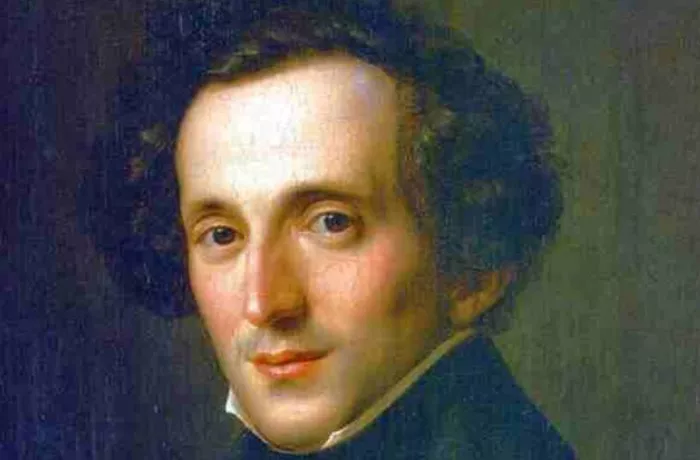Felix Mendelssohn-Bartholdy, a prominent figure of the Romantic era, left an indelible mark on the world of classical music through his rich symphonic repertoire. His symphonies, in particular, stand as pillars of his creative genius, showcasing a blend of classical form, lyrical beauty, and innovative orchestration. In this comprehensive exploration, we delve into Mendelssohn’s key symphonies, their distinctive features, performances and legacy, as well as his other notable works.
Overview of Mendelssohn’s Symphonies
Felix Mendelssohn’s symphonies epitomize Romantic-era orchestral brilliance, blending lyrical melodies with structural clarity. His “Scottish” Symphony (No. 3) evokes the landscapes of Scotland, while the “Italian” Symphony (No. 4) radiates joy and rhythmic vitality inspired by Italy. The “Reformation” Symphony (No. 5) commemorates the Protestant Reformation with grand chorale themes. Mendelssohn’s orchestration is marked by elegant textures and vibrant colors, showcasing his mastery of the classical form infused with Romantic expressiveness. These symphonies, alongside his diverse artistic output, solidify Mendelssohn’s legacy as a trailblazer in symphonic music, influencing generations of composers and enchanting audiences worldwide.
Key Symphonies
Mendelssohn composed five symphonies throughout his career, each showcasing his evolving style and musical maturity.
1. Symphony No. 1 in C Minor, Op. 11 – Written when Mendelssohn was only 15 years old, this symphony displays remarkable craftsmanship and hints at the influences of Beethoven and Mozart. It features a bold opening movement, a lyrical andante, a playful minuet, and a lively finale.
2. Symphony No. 2 in B-flat Major, Op. 52 “Lobgesang” – Also known as the “Hymn of Praise,” this symphony incorporates vocal soloists and a choir in the final movement, setting it apart from traditional symphonic forms. Its grandeur and jubilant character make it a favorite for major choral performances.
3. Symphony No. 3 in A Minor, Op. 56 “Scottish” – Inspired by Mendelssohn’s visit to Scotland, this symphony captures the rugged landscapes and dramatic moods of the Scottish countryside. Its brooding opening and energetic finale make it a captivating journey through musical storytelling.
4. Symphony No. 4 in A Major, Op. 90 “Italian” – Evoking the spirit of Italy, this symphony is filled with sunny melodies, vibrant rhythms, and a sense of Mediterranean joy. Its lively tempo and colorful orchestration reflect Mendelssohn’s love for Italian culture.
5. Symphony No. 5 in D Major, Op. 107 “Reformation” – Commissioned to commemorate the 300th anniversary of the Augsburg Confession, this symphony combines elements of Lutheran chorales with symphonic grandeur. Its final movement features the famous “Dresden Amen,” adding a solemn and spiritual dimension to the work.
Distinctive Features
Mendelssohn’s symphonies exhibit several distinctive features that set them apart from his contemporaries:
Lyrical Melodies – Mendelssohn’s gift for crafting beautiful, singable melodies is evident throughout his symphonies, adding a poetic quality to his music.
Innovative Orchestration – He was known for his innovative use of orchestral colors, blending instruments seamlessly to create rich textures and evocative atmospheres.
Structural Clarity – Despite his Romantic inclinations, Mendelssohn maintained a sense of classical clarity and structure in his symphonies, balancing emotional depth with formal integrity.
Programmatic Elements – In works like the “Scottish” and “Italian” symphonies, Mendelssohn incorporates programmatic elements, drawing inspiration from specific themes or locations to inform the music’s narrative.
Performance and Legacy
Mendelssohn’s symphonies have enjoyed enduring popularity in concert halls worldwide. Their accessible yet sophisticated style appeals to audiences and performers alike, ensuring a lasting legacy for the composer.
Concert Hall Staples – Pieces like the “Italian” Symphony and the “Scottish” Symphony are staples of orchestral programming, frequently performed by leading symphony orchestras.
Choral Masterpieces – The “Lobgesang” Symphony continues to be celebrated for its fusion of symphonic and choral elements, often performed in major choral events and festivals.
Influence on Later Composers – Mendelssohn’s symphonic style, characterized by its elegance and lyricism, has influenced subsequent generations of composers, including Brahms and Schumann.
Other Works
In addition to his symphonies, Mendelssohn composed a wealth of other notable works across various genres:
Overtures – His overtures, such as “A Midsummer Night’s Dream” and “The Hebrides,” showcase his gift for capturing dramatic themes and evoking vivid imagery.
Concertos – Mendelssohn’s violin concerto in E Minor remains a cornerstone of the violin repertoire, admired for its technical brilliance and emotional depth.
Chamber Music – His chamber music, including string quartets and piano trios, displays his mastery of intimate, expressive writing.
Piano Works – Mendelssohn’s piano works, like the “Songs Without Words” series, highlight his melodic inventiveness and pianistic flair.
Conclusion
Felix Mendelssohn’s symphonies stand as enduring treasures of the Romantic era, blending classical craftsmanship with lyrical beauty and innovative spirit. From the youthful vigor of his First Symphony to the spiritual depth of the “Reformation” Symphony, his works continue to captivate audiences and inspire musicians worldwide. Through his symphonic legacy and a vast array of compositions, Mendelssohn remains a towering figure in the pantheon of classical music, his music transcending time to resonate with generations past, present, and future.

